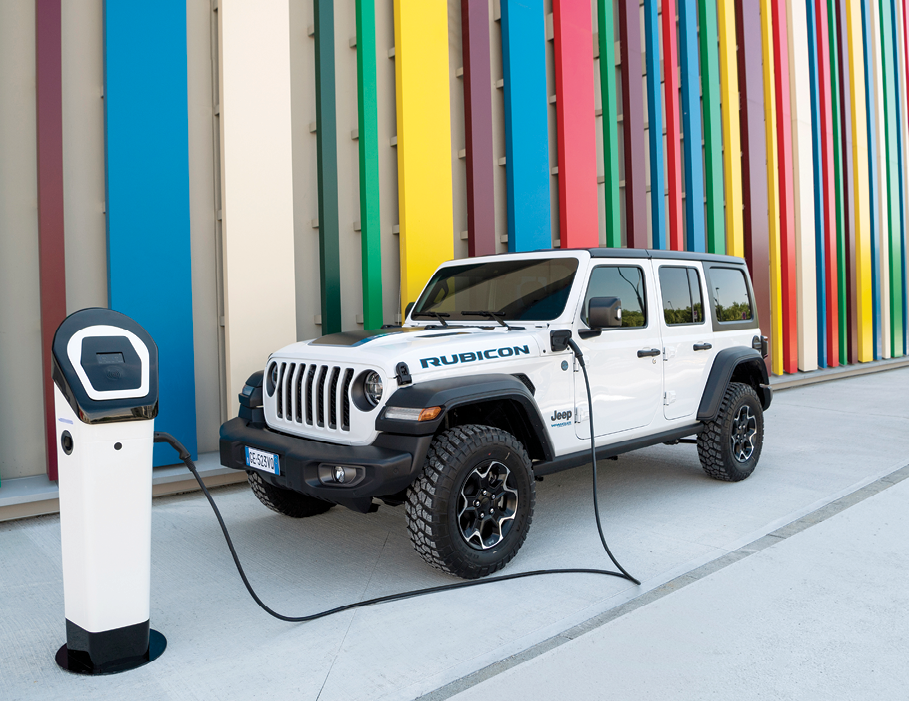
Hunt of fresh air
I do not know about the others but here on European meadows, we concluded that we want fresh air, as fresh as possible. In the hope that echoes from Brussels will be taken into account on our realms, let s look at what the future holds for us.
European Union has set out to reduce by 2030 the level of emissions of 55% compared with the level of emissions in 1990. Europe wants to become by 2050 the first continent emissions neutral. It is an ambitious target but steps are already taken. Over the last 16 years, emissions from the energy industry and from the energy intensive industries decreased successfully by 42.8%.
Today, European Commission aims to reduce even more global emission ceiling and to increase its annual rate of reduction. However, no efforts are visible at the citizen s level, at the level of what everyday life means… Until something comes along in the linearity of everyday life when the citizen is forced or compelled by taxes and duties to change his options. Like the song says…”What do you want from us? Why should we paint the walls?”
Cars and utility vans/small-utility vans are accountable for about 12% and respectively 2.5% of the total emission of carbon dioxide (CO2) in the EU, which is the main greenhouse gas. Obviously, action will be taken here, too and obviously, it will affect us directly. Definitely, whether we are considering buying a car, we should be paying attention to what we are going to give our money on and whether our business has a component involving road transport, we will have to be extremely careful.
What thresholds pursues the European Union?
2020-2024
For this interval, the EU sets fleet-wide CO2 targets for constructors.
Vehicles: 95 g CO2 / km
Vans: 147 g CO2 / km
However, these thresholds are established taking into account the NEDC test procedure, which are more optimistic for constructors. From this year, the testing procedure will be based on the WLTP procedure.
In order to understand where the constructors are standing and how much they have to work as far as the level of emission is concerned, here are some examples. Dacia Sandero, the new European sales champion, has emission of 108 g/km CO2 according to the WLTP standards in ECO-G version with petrol/LPG supply. If we look at a Sandero SCe 65 horsepower, it has emissions of 120 g. Advancing to the compact models and choosing as milestone the leader of the segment – Volkswagen Golf 8, for a 1.0 TSI motorization we are talking about emissions of 123 g/km, version 1.5 eTSI has emissions of 126 g/km, and a classic Golf GTI stern drive 2.0 TSI has emissions of 166 g/km in accordance with the WLTP standards. However, you have also the alternative of a Golf eHybrid 1.4 TSI who has emissions of 21 g/km. We can climb to thin areas, however we will find there higher values. As manufacturers have that limit of 95 g/km programmed to be reached in 2024, that is, no more than three years from now, definitely we will witness the disappearance of some engines from the range.
Until 2022, manufacturers benefit from a bonuses system, cars with emission lower than 50 g CO2/ km are accounted for as 1,67 cars his year and 1,33 cars in 2022. For light commercial vehicles, this bonus system does not apply.
2025-2030
Cars: reduction of 15% from 2025 and of 37, 5% from 2030.
Vans: reduction of 15% from 2025 and of 31% from 2030
Whether a manufacturer exceeds the CO2 limit for the whole fleet, the penalties shall take the form of a fee per additional gram at fleet level. The tax is 95 Euro / gram and applies to each model sold by the manufacturer.
Fit for 55
This year, the European Commission announced the plan Fit for 55 aiming for an emission-neutral Europe by 2050. A first step is reducing the emissions of 55% by 2030. Yes, we saw earlier that some targets are set for 2030. The new plan is more ambitious, however for the moment it awaits to be voted.
The project ”Fit for 55” was proposed this year and suggests that 2030 to be synonymous with an emission reduction of 55% compared to 1990.
In the case of LCV, it was proposed that they should emit by 50% less.
In addition, from 2035 we are talking about the sale of zero emissions cars.
From 2026 road, transport will be affected also by the emissions taxation, and thus the use of cleaner fuels is promoted. Moreover, the CO2 emissions taxation are to be introduced to the rest of the sectors, for instance in aviation, which at this moment it is an exception, or in shipping.
So far things are quite clear and perhaps somewhere comfortable. ”I am keeping my current car!”
How to explain all the above in our day-to-day life?
Another mission of the authorities in their fight for a clean air is the removal of old and polluting cars from public roads. The introduction of a new car tax is not likely, its real chances of implementation are near-zero.
Whether we take into account a statement of Tánczos Barna, Minister of the Environment:”Those who want old cars with large engines must be discouraged. Through taxes. Romanian state must increase the tax on these cars”, things are clear.
The main weapon that will send to REMAT – Recycling Materials many models with a venerable age and generous emissions is how soon we will find ourselves with a new taxation system for cars, a system who will take into account engine capacity and emissions. We expect that the Romanian government establish some minimal thresholds for these taxes. That is in order to prevent full discretion of local authorities in establishing these taxes. Following the example of green certificates from the electricity bill, fuel taxes will increase. You will pay depending on how you travel, or in other words, depending on how much fuel you use. Thus, maybe some drivers will abandon the practice of leaving the engine running when stationary for 10-20 minutes.
Ursula von der Leyen, German President of the European Commission, promised that – „EU is ready to help Romania to clean up its car park”. Let us not expect derogations, pastimes, shut-eye or low taxes. No! European aid will go to the construction of loading stations and development of infrastructure; however this is where everything depends on local authorities, that have to turn this money into concrete things that will assist the taxpayer and encourage him to make the transition to a greener car.
Various aid schemes will continue to exist from the government for the purchase of electric cars or hybrid plug-in cars. Rabla Plus programme will continue most likely, however we do not see a future for Classical Rabla.
It is a clear priority to become more responsible when it comes to the way we treat our planet. It is hard to believe that we will reach that level of common conscience and act all together as a single being. This is probably why we need new rules.
I do not know about the others but here on European meadows, we concluded that we want fresh air, as fresh as possible. In the hope that echoes from Brussels will be taken into account on our realms, let s look at what the future holds for us.
European Union has set out to reduce by 2030 the level of emissions of 55% compared with the level of emissions in 1990. Europe wants to become by 2050 the first continent emissions neutral. It is an ambitious target but steps are already taken. Over the last 16 years, emissions from the energy industry and from the energy intensive industries decreased successfully by 42.8%.
Today, European Commission aims to reduce even more global emission ceiling and to increase its annual rate of reduction. However, no efforts are visible at the citizen s level, at the level of what everyday life means… Until something comes along in the linearity of everyday life when the citizen is forced or compelled by taxes and duties to change his options. Like the song says…”What do you want from us? Why should we paint the walls?”
Cars and utility vans/small-utility vans are accountable for about 12% and respectively 2.5% of the total emission of carbon dioxide (CO2) in the EU, which is the main greenhouse gas. Obviously, action will be taken here, too and obviously, it will affect us directly. Definitely, whether we are considering buying a car, we should be paying attention to what we are going to give our money on and whether our business has a component involving road transport, we will have to be extremely careful.
What thresholds pursues the European Union?
2020-2024
For this interval, the EU sets fleet-wide CO2 targets for constructors.
Vehicles: 95 g CO2 / km
Vans: 147 g CO2 / km
However, these thresholds are established taking into account the NEDC test procedure, which are more optimistic for constructors. From this year, the testing procedure will be based on the WLTP procedure.
In order to understand where the constructors are standing and how much they have to work as far as the level of emission is concerned, here are some examples. Dacia Sandero, the new European sales champion, has emission of 108 g/km CO2 according to the WLTP standards in ECO-G version with petrol/LPG supply. If we look at a Sandero SCe 65 horsepower, it has emissions of 120 g. Advancing to the compact models and choosing as milestone the leader of the segment – Volkswagen Golf 8, for a 1.0 TSI motorization we are talking about emissions of 123 g/km, version 1.5 eTSI has emissions of 126 g/km, and a classic Golf GTI stern drive 2.0 TSI has emissions of 166 g/km in accordance with the WLTP standards. However, you have also the alternative of a Golf eHybrid 1.4 TSI who has emissions of 21 g/km. We can climb to thin areas, however we will find there higher values. As manufacturers have that limit of 95 g/km programmed to be reached in 2024, that is, no more than three years from now, definitely we will witness the disappearance of some engines from the range.
Until 2022, manufacturers benefit from a bonuses system, cars with emission lower than 50 g CO2/ km are accounted for as 1,67 cars his year and 1,33 cars in 2022. For light commercial vehicles, this bonus system does not apply.
2025-2030
Cars: reduction of 15% from 2025 and of 37, 5% from 2030.
Vans: reduction of 15% from 2025 and of 31% from 2030
Whether a manufacturer exceeds the CO2 limit for the whole fleet, the penalties shall take the form of a fee per additional gram at fleet level. The tax is 95 Euro / gram and applies to each model sold by the manufacturer.
Fit for 55
This year, the European Commission announced the plan Fit for 55 aiming for an emission-neutral Europe by 2050. A first step is reducing the emissions of 55% by 2030. Yes, we saw earlier that some targets are set for 2030. The new plan is more ambitious, however for the moment it awaits to be voted.
The project ”Fit for 55” was proposed this year and suggests that 2030 to be synonymous with an emission reduction of 55% compared to 1990.
In the case of LCV, it was proposed that they should emit by 50% less.
In addition, from 2035 we are talking about the sale of zero emissions cars.
From 2026 road, transport will be affected also by the emissions taxation, and thus the use of cleaner fuels is promoted. Moreover, the CO2 emissions taxation are to be introduced to the rest of the sectors, for instance in aviation, which at this moment it is an exception, or in shipping.
So far things are quite clear and perhaps somewhere comfortable. ”I am keeping my current car!”
How to explain all the above in our day-to-day life?
Another mission of the authorities in their fight for a clean air is the removal of old and polluting cars from public roads. The introduction of a new car tax is not likely, its real chances of implementation are near-zero.
Whether we take into account a statement of Tánczos Barna, Minister of the Environment:”Those who want old cars with large engines must be discouraged. Through taxes. Romanian state must increase the tax on these cars”, things are clear.
The main weapon that will send to REMAT – Recycling Materials many models with a venerable age and generous emissions is how soon we will find ourselves with a new taxation system for cars, a system who will take into account engine capacity and emissions. We expect that the Romanian government establish some minimal thresholds for these taxes. That is in order to prevent full discretion of local authorities in establishing these taxes. Following the example of green certificates from the electricity bill, fuel taxes will increase. You will pay depending on how you travel, or in other words, depending on how much fuel you use. Thus, maybe some drivers will abandon the practice of leaving the engine running when stationary for 10-20 minutes.
Ursula von der Leyen, German President of the European Commission, promised that – „EU is ready to help Romania to clean up its car park”. Let us not expect derogations, pastimes, shut-eye or low taxes. No! European aid will go to the construction of loading stations and development of infrastructure; however this is where everything depends on local authorities, that have to turn this money into concrete things that will assist the taxpayer and encourage him to make the transition to a greener car.
Various aid schemes will continue to exist from the government for the purchase of electric cars or hybrid plug-in cars. Rabla Plus programme will continue most likely, however we do not see a future for Classical Rabla.
It is a clear priority to become more responsible when it comes to the way we treat our planet. It is hard to believe that we will reach that level of common conscience and act all together as a single being. This is probably why we need new rules.
Constantin Ciobanu
Share
Share















